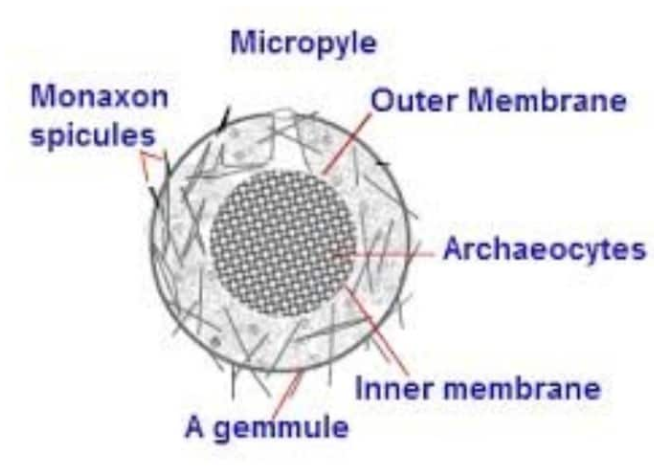Gemmules are asexually produced masses of the cells which are capable to develop into the new organism or the new adult. An example of the gemmule is the freshwater sponge. They are small cells, having the bud-like appearance, formed by the sponges and can withstand the adverse environmental conditions. In the freshwater sponges, mainly the asexual reproduction is carried out by the budding or the gemmulation. The internal buds formed by the freshwater sponges are gemmules. They are tough and hard structures and are coated with a dormant structure of the embryonic cells.


How Gemmules are Produced?
A freshwater genus of some sponges produces the gemmules. Mainly the gemmules are produced to survive in the harsh environmental conditions, and for the germination, and the production of the new sponges. When the gemmules are formed, the archeocytes totipent cells are loaded with the food material in the form of lipoprotein, or glycoprotein, and then they get combined into the mass. Then amebocytes that are the cells with the motility, start moving and is surrounded by the central mass of the archeocytes and start secreting the thick solid chitin around the archeocytes and thus forming a layer around it. After this process, there is secretion of the amphidisc spicules by the sclera oblasts in between the internal membrane and external membrane.
Gemmules have resulted in the combination of lipoprotein, and glycoprotein cells. Gemmules are rooted in an envelope that is thick in nature and is layered by the double membrane. Also, tiny openings are present on the heads of the gemmules which helps the cell to exit during the development and reproduction, under favorable conditions.
The gemmule which is completely formed has the normal size and is a structure like the hardball. On this gemmule, along with the reproductive cells, a mass of food is loaded that is embedded in the membranes. There is a micropyle that is the minute opening and the cells come out by this structure, during the development when the conditions become favorable. A large number of the gemmules can be seen during the autumn season, as the freshwater sponges die and they leave behind the gemmules. These gemmules which were earlier produced by the sponges, withstand the harsh environmental conditions of the winter and summer season and they remain active. Later on, upon the favorable environmental conditions, the gemmules start developing into the new sponges whenever there is the availability of the abundant water.
